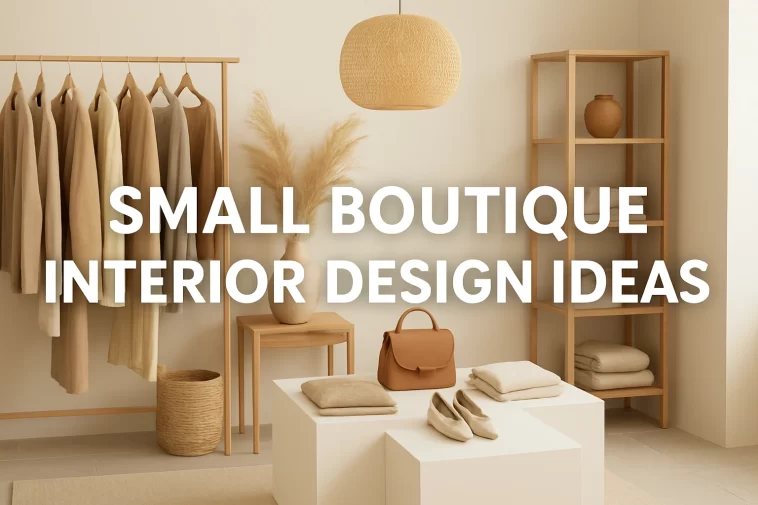A small boutique has the power to feel warm, personal, and memorable. You do not need a large store to make a strong impression. What matters most is how well the space is planned and how comfortable it feels for customers. With the right design choices, even a small retail area can look open, organized, and inviting.
This guide explains simple and useful ideas that anyone can understand. You will learn how to plan the layout, choose lighting, select fixtures, create attractive displays, design fitting rooms, manage storage, and build an enjoyable atmosphere. Whether you are launching a new boutique or improving an existing one, these ideas will help you make the most out of every corner while keeping your brand personality clear and consistent.
1. Choose the Right Layout for Small Boutiques
A smart layout helps customers move around easily without feeling crowded. The main goal is to guide people through the store in a natural and comfortable way.
Best layout options for small spaces
Free flow layout
This layout does not force a fixed path. Shoppers can walk freely and explore at their own pace. It works well for relaxed and casual boutique settings.
Boutique layout
This design divides the store into smaller sections or themed zones. Each area feels like a mini display room which keeps customers curious and encourages them to look around longer.
Key layout guidelines
- Keep the main walkway at least 90 to 120 centimeters wide
- Do not block the entrance with tall racks or heavy furniture
- Place a focal display directly visible from the doorway
- Use the back section for new arrivals or limited collections
- Put slower browsing items in corners instead of high movement areas
A clear and simple layout helps the store feel larger and more organized.
2. Use Layered Lighting to Highlight Products
Lighting plays a big role in how products appear and how customers feel inside the store. Good lighting can make colours look true, improve visibility, and create a welcoming atmosphere.
The four essential layers of boutique lighting
Ambient lighting
Provides overall brightness and prevents dark spots.
Task lighting
Helps with activities like reading price tags or checking out at the counter.
Accent lighting
Draws attention to special displays, mannequins, or promotional products.
Decorative lighting
Adds style through chandeliers, pendants, or artistic fixtures.
Practical lighting tips
- Warm white light around 3000K creates a soft and flattering glow
- Use adjustable track lights to highlight key items
- Add lighting inside display shelves for small accessories
- Use a statement light fixture to create a focal point
- Avoid strong shadows in fitting rooms to keep customers comfortable
When lighting is planned correctly, products look more appealing and the store feels more premium.
3. Select Fixtures and Furniture that Offer Flexibility
Fixtures are more than display tools. They help shape the store’s personality and also decide how easily you can change the layout in the future.
What works best in small retail spaces
- Modular shelving that can be moved or rearranged
- Lightweight racks that are easy to shift during events
- Wall mounted displays that save floor space
- Nesting tables that allow multi level product presentation
Fixture styling tips
- Use a limited number of finishes for a clean and coordinated look
- Keep metal tones consistent such as all brass or all matte black
- Mix low and tall displays to add visual balance
- Choose furniture that also offers storage like benches with drawers
Flexible fixtures save money because you can update the store for new seasons without a major renovation.
4. Choose Materials and Finishes that Elevate the Space
In small boutiques, customers notice details more clearly because the space is compact. This makes material selection very important.
Materials that work beautifully in retail
- Light wood for a warm and friendly feel
- Textured or polished plaster for a smooth and premium finish
- Terrazzo flooring for durability and pattern variety
- Cork panels for acoustic comfort and a natural look
Tips for choosing finishes
- Use only one or two standout materials to avoid visual overload
- Balance smooth surfaces with textured ones
- Select matte finishes for a softer appearance under lighting
- Choose durable and low maintenance options that handle frequent use
Eco friendly materials like reclaimed wood and low VOC paint also appeal to modern customers who value sustainability.
5. Plan a Colour Palette with Intention
Colour affects the mood of the store and how easily customers can focus on products. A simple palette helps a small boutique feel calm and open.
How to build an effective colour scheme
- Start with one main neutral tone such as warm beige, soft cream, or light grey
- Add a secondary colour through materials like wood or upholstery
- Choose one accent colour and use it sparingly for highlights
Additional colour guidelines
- Keep walls neutral if products are colourful or patterned
- Use texture instead of colour for minimal style brands
- Test your colour samples under store lighting before painting
- Use bold colours only as a single feature wall instead of the whole store
A well chosen palette makes products stand out and prevents the space from feeling cramped.
6. Use Visual Merchandising to Tell Micro Stories
Visual merchandising helps customers understand how to use or style the products. In small boutiques, every display must be thoughtful because space is limited.
Methods that increase customer engagement
- Create small themed displays like travel outfits or festive looks
- Group products by colour, style, or purpose
- Place small add on items near the billing counter
- Use vertical space by stacking upwards instead of spreading outward
- Refresh displays weekly to maintain excitement
The goal of every display
Help customers imagine how the product fits into their life. Clear and simple storytelling reduces confusion and speeds up buying decisions.
7. Use Mirrors and Reflections to Expand Perception
Mirrors make a small boutique look larger by reflecting light and increasing visual depth.
Placement tips
- Install full length mirrors near fitting areas for outfit checks
- Add mirrored panels behind shelves to create a spacious effect
- Avoid placing mirrors where storage or staff zones become visible
- Choose curved mirrors for a soft and modern look
Mirrors are an inexpensive way to brighten and visually expand the space.
8. Design Comfortable and Functional Fitting Rooms
Fitting rooms are where customers finalize most clothing purchases. A comfortable fitting room can increase sales and improve satisfaction.
What every small boutique fitting room needs
- Soft and warm lighting around the mirror
- A cushioned bench for comfort
- Multiple hooks for clothes and bags
- A small shelf for personal items
- Neutral wall colours that show true fabric tones
Extra touches that enhance the experience
- A call button for assistance
- A curtain with weighted edges for smooth closing
- Friendly signage or subtle positive messages if suitable for the brand
Even a single well designed fitting room can make a strong difference.
9. Add Sound, Scent, and Sensory Details
A memorable shopping experience engages more than just the eyes. Sensory details help customers feel relaxed and connected to the brand.
Sound
- Use playlists that match the brand mood
- Keep the volume low enough for normal conversation
- Avoid sudden music changes that disrupt the atmosphere
Scent
- Choose a light and pleasant signature fragrance
- Avoid strong scents to prevent discomfort
- Use gentle diffusers instead of heavy sprays
Small experiential touches
- Branded packaging with soft tissue paper
- Smooth and high quality hangers
- Flavoured water or small refreshments during events
Small gestures show care and encourage repeat visits.
10. Maximize Storage Without Compromising Style
Storage is necessary to keep the sales floor clean and organized. A small boutique needs clever storage that stays hidden but easy to access.
Smart storage ideas
- Built in cabinets behind the counter
- Overhead shelves for less frequently used items
- Under bench drawers for accessories
- Rolling racks that can be stored when not required
- Clear labeling for faster restocking and inventory checks
A tidy store feels more welcoming and allows customers to focus on products instead of clutter.
11. Integrate Technology for a Modern Boutique Experience
Simple technology can improve efficiency and offer more convenience to customers.
Useful tech integrations
- Cloud based billing system with mobile checkout
- QR codes linked to product details or size options
- Tablets for browsing variations not displayed in store
- Digital customer records for rewards and loyalty programs
- Contactless payment options for quick transactions
Technology should support the shopping experience without overwhelming it.
12. Host Events and Create Community Moments
Events help small boutiques build relationships and attract loyal customers. They make the space feel special and create reasons for people to visit more often.
Event ideas that work well in compact spaces
- Styling sessions with fashion experts
- Launch previews for new collections
- Pop ups featuring local brands or artisans
- Mini workshops like fabric care or jewellery styling
- VIP evenings for regular customers
Use lightweight furniture so the store can be rearranged quickly when required.
13. Prioritize Sustainability and Durability
Customers today care about responsible design and long lasting materials. Sustainable choices are good for the environment and reduce long term costs.
Practical sustainability steps
- Use LED lighting to reduce energy usage
- Choose durable flooring that lasts many years
- Select recycled or reclaimed material for fixtures
- Offer reusable or minimal packaging
- Repair fixtures instead of replacing them immediately
Communicating these choices builds trust and creates a positive brand image.
14. Ensure Accessibility and Safety
A well designed boutique is easy to move around and comfortable for all customers.
Accessibility guidelines
- Maintain at least one pathway with a width of 90 centimeters
- Provide seating near fitting rooms
- Use flooring that prevents slipping
- Keep exit routes visible and clear
- Avoid unnecessary obstacles and clutter
Good accessibility helps every visitor enjoy the space without difficulty.
15. Small Boutique Design Concepts for Inspiration
Minimal Gallery Concept
Clean white walls, slim wooden fixtures, and soft lighting create a calm and modern look. Best suited for brands that want products to feel like art pieces.
Warm Handcrafted Concept
Reclaimed wood, natural textures, and earthy colours create a cozy atmosphere. Ideal for handmade or artisanal product ranges.
Modern Luxe Concept
Neutral walls, terrazzo flooring, brass accents, and statement lighting create a premium feel. Suitable for high end ready to wear boutiques.
These concepts can be adapted for different budgets and store sizes.
Implementation Roadmap for New Boutique Owners
Week 1:
Identify your brand mood, take measurements, and draw simple circulation paths.
Week 2:
Select finishes, fixtures, and lighting. Place orders and finalize installation dates.
Week 3:
Install flooring, paint, and lighting. Adjust angles and test product visibility.
Week 4:
Arrange fixtures, set up displays, train staff, and conduct a soft opening to gather feedback.
A step by step plan makes the process easy to follow without stress.
Below are Few Small Boutique Interior Design Ideas
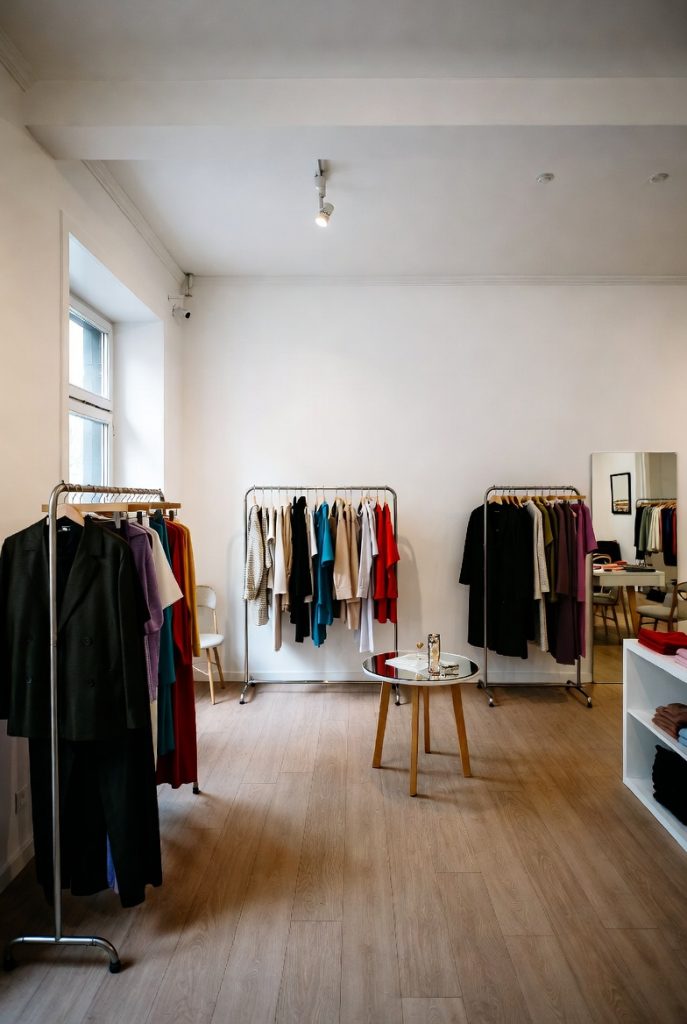
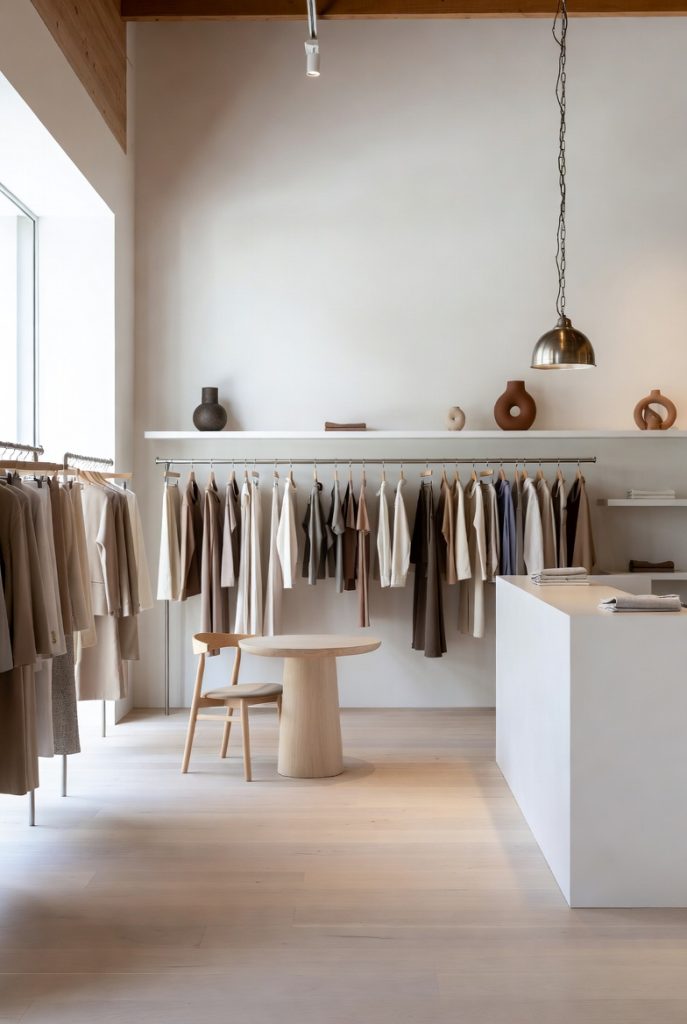


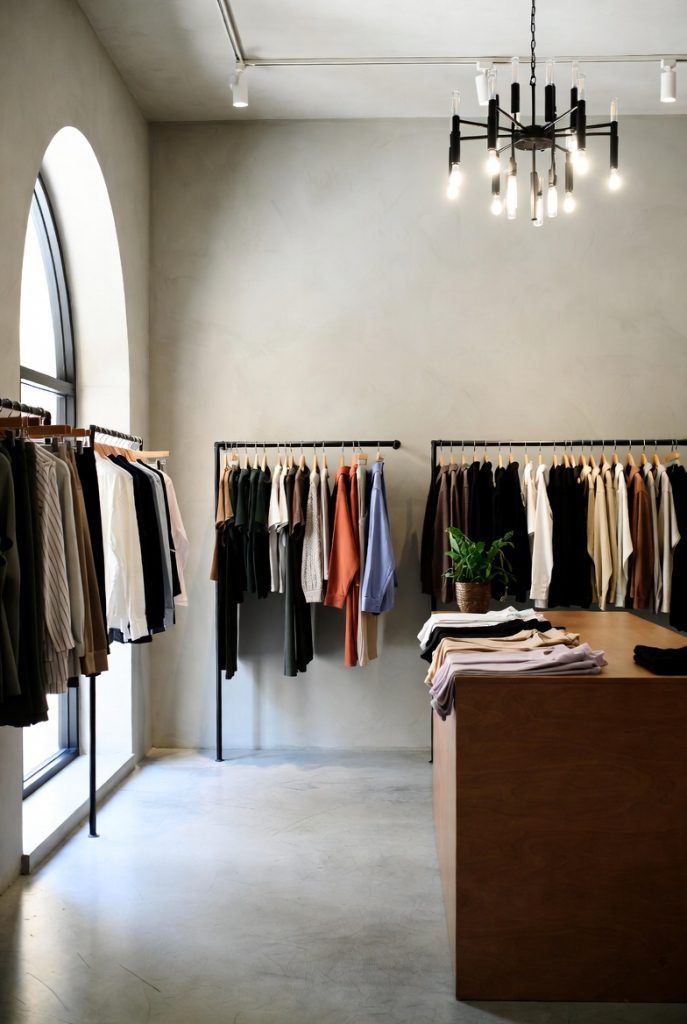

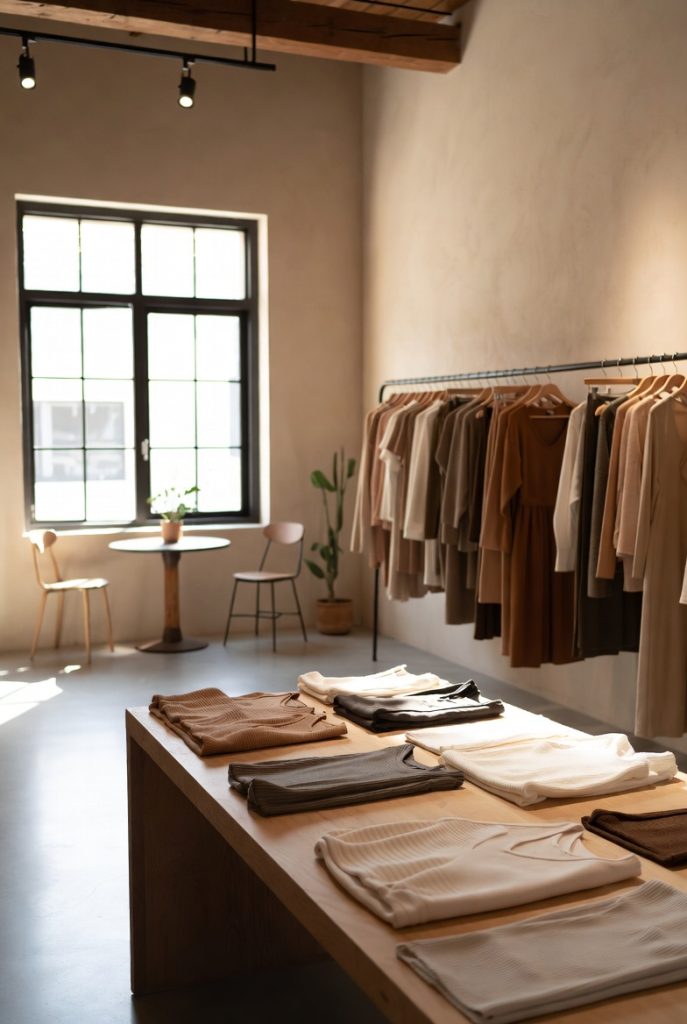


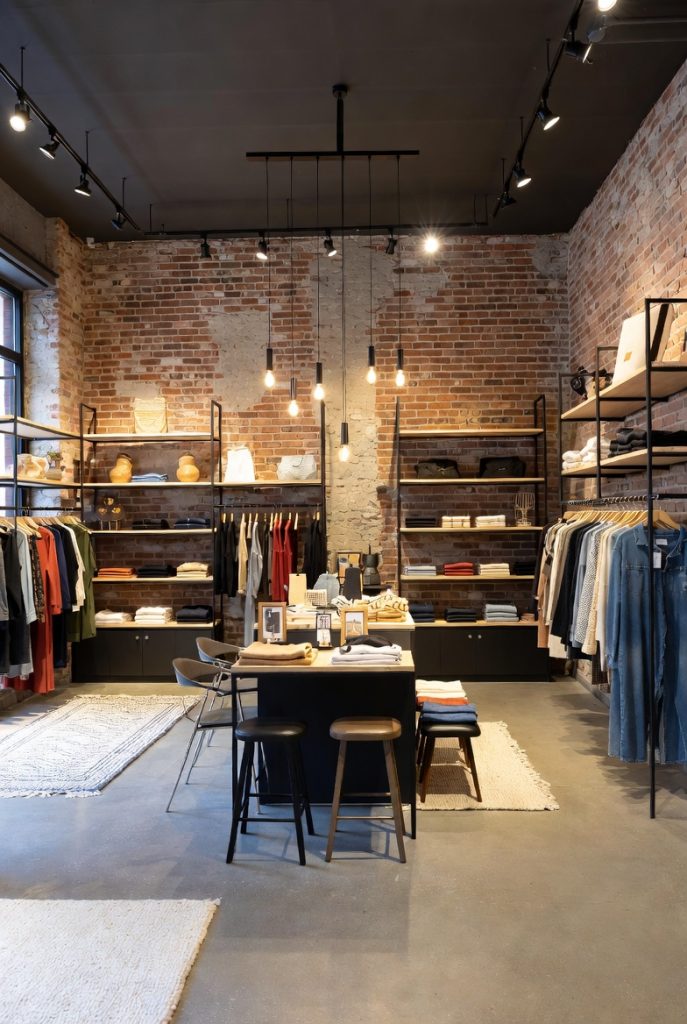
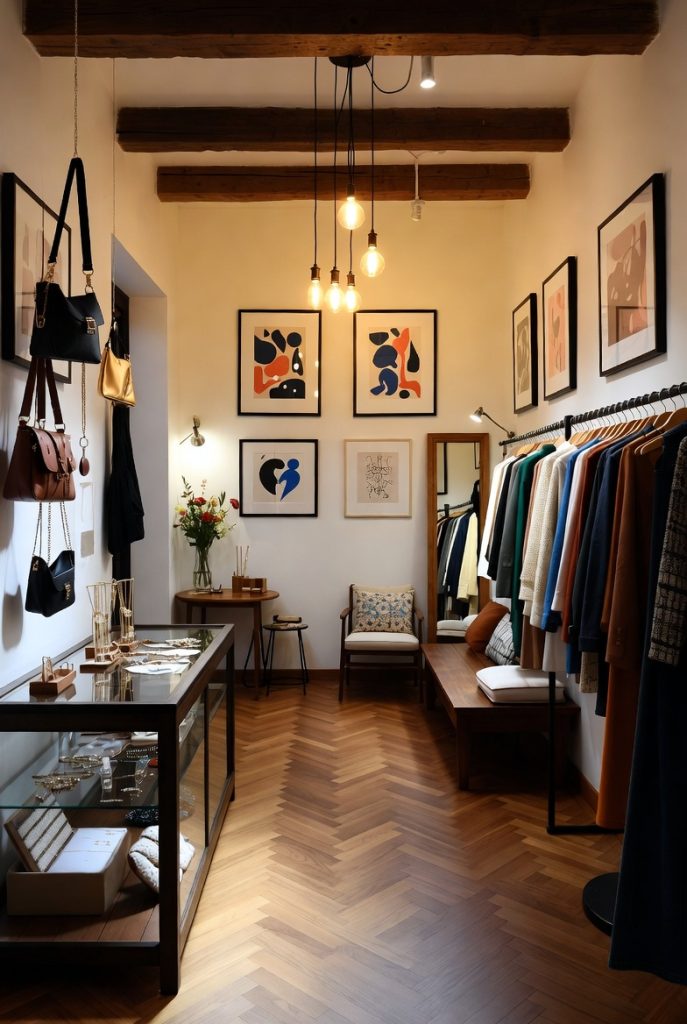



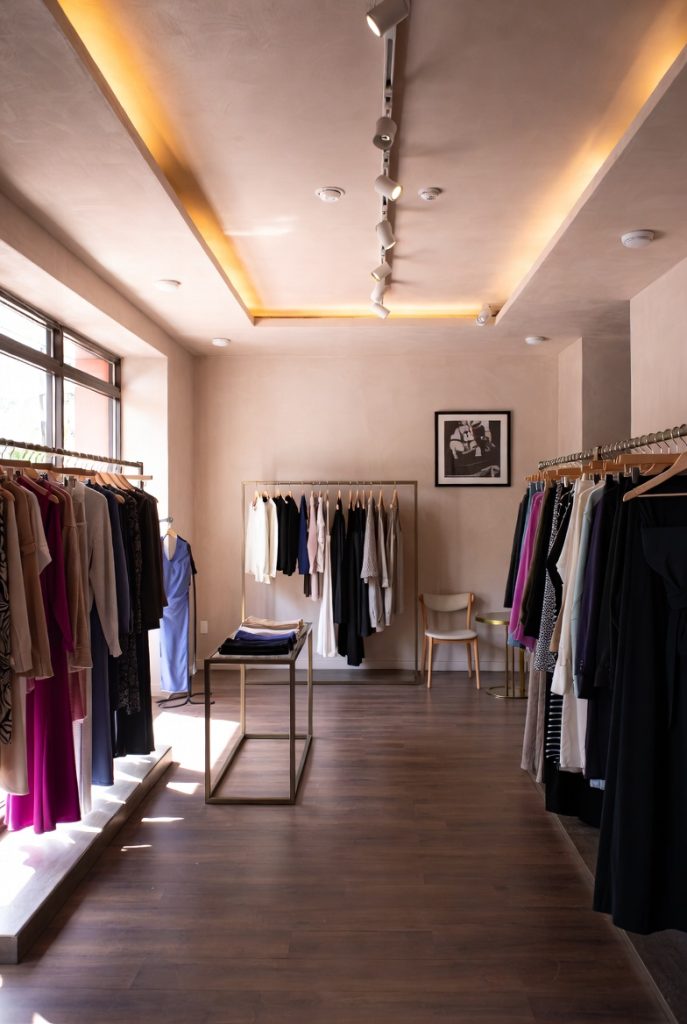
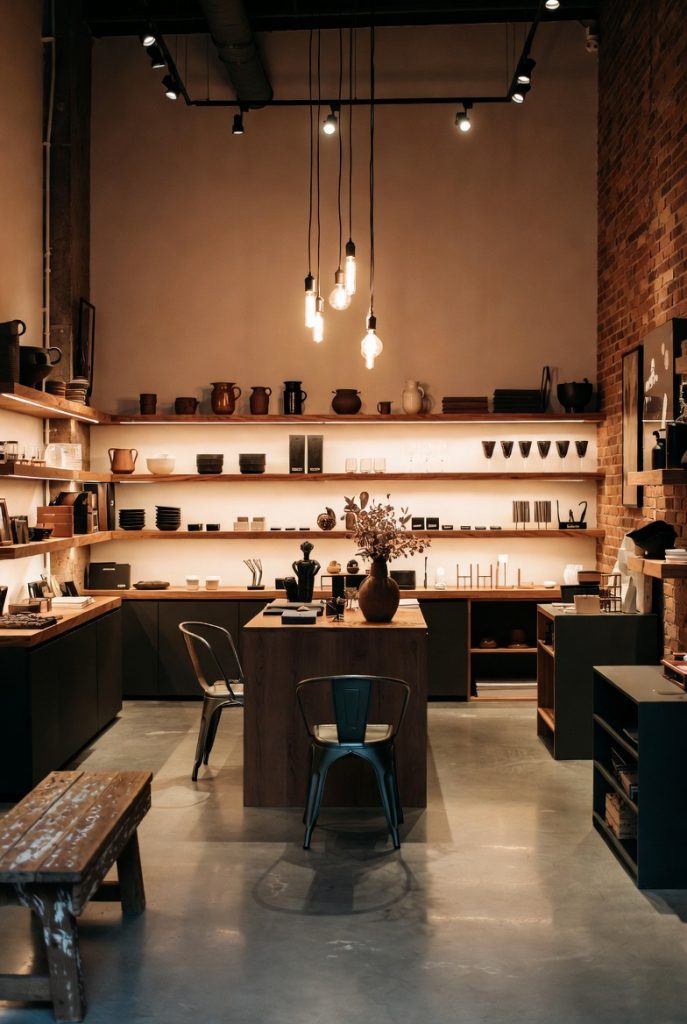

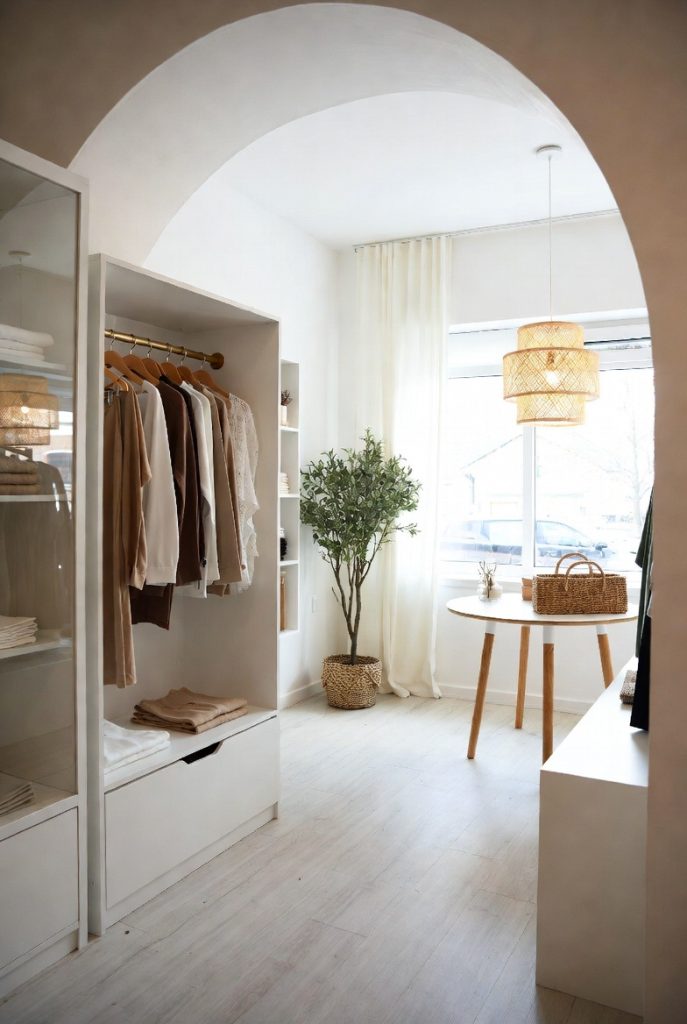
Frequently Asked Questions – (FAQ’s)
Q1. How can I make a small boutique look bigger
Use mirrors, soft neutral colours, and low profile fixtures. Remove clutter and keep the layout simple.
Q2. What is the best lighting temperature for fashion boutiques
Warm white around 3000K makes fabrics and skin tones look natural and appealing.
Q3. How often should visual displays be updated
Refresh small displays weekly and reorganize main sections every four to six weeks depending on the season.
Q4. Are modular fixtures worth the investment
Yes. They allow the store to change easily and reduce renovation costs over time.
Q5. How can a boutique compete with online shopping
Offer personal service, in store experiences, tactile product interaction, fast checkout, and convenient pickup or return options.
You Might Also Love This:
Final Thoughts:
A small boutique can feel stylish, comfortable, and memorable when every design choice has a clear purpose. Focus on simple circulation, well layered lighting, flexible fixtures, and thoughtful displays. Use a calm colour palette and add small sensory touches that customers will remember.
When shoppers enjoy the space, they stay longer, make confident purchase decisions, and look forward to returning.


